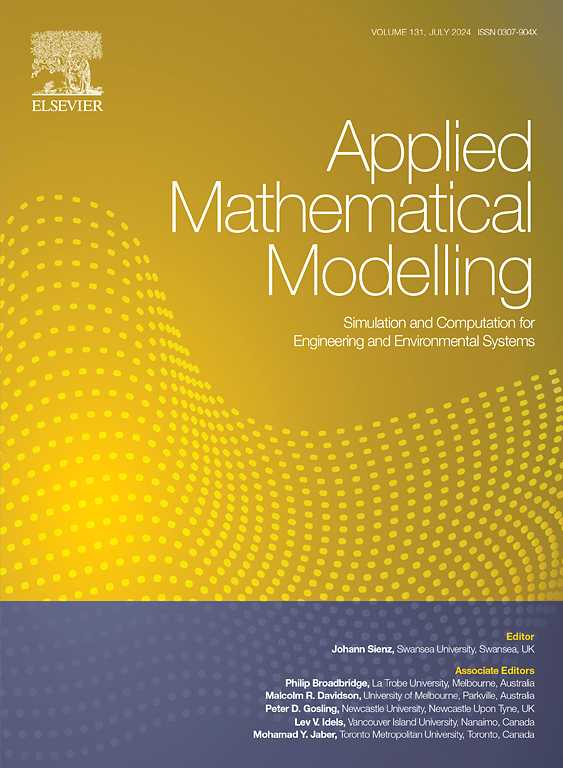Adaptive Kriging elastodynamic modelling and analysis for a redundantly actuated parallel manipulator
IF 4.4
2区 工程技术
Q1 ENGINEERING, MULTIDISCIPLINARY
引用次数: 0
Abstract
This paper presents a quantitative analysis comparing the elastodynamic performance of a redundantly actuated parallel manipulator to its non-redundantly actuated counterpart. A unified elastodynamic model is established to encompasses both actuation types, facilitating a comprehensive analysis of their performance characteristics. To assess the impact of redundant actuation, frequency variation indices are defined to measure the influence of the redundantly actuated limbs on the overall system dynamics. Two global sensitivity indices are introduced to quantify how variations in design variables affect elastodynamic performance. An adaptive Kriging-based algorithm is developed to predict elastodynamic behavior, and it is numerically validated for both accuracy and efficiency. Through a detailed elastodynamic comparison and sensitivity analysis, we identify the key effects of redundant actuation and pinpoint the most significant design variables. Our findings reveal that the enhancements in low-order natural frequencies due to redundant actuation are configuration- and order-dependent. The redundantly actuated parallel manipulator demonstrates heightened sensitivity to geometric variables in terms of elastodynamic performance, surpassing that of its non-redundantly actuated variant. The sensitivity analysis provides valuable insights, guiding future improvements in elastodynamic performance. Notably, the thickness of the moving platform emerges as a critical parameter that warrants optimization during the design phase. Therefore, this analysis is particularly pivotal in the initial evaluation stages of parallel manipulators, ensuring that designs are refined for enhanced dynamic responses. With necessary modifications, this work can be applied to other redundantly actuated parallel manipulators to contribute a deeper understanding of how redundancy influences their dynamic characteristics.
求助全文
约1分钟内获得全文
求助全文
来源期刊

Applied Mathematical Modelling
数学-工程:综合
CiteScore
9.80
自引率
8.00%
发文量
508
审稿时长
43 days
期刊介绍:
Applied Mathematical Modelling focuses on research related to the mathematical modelling of engineering and environmental processes, manufacturing, and industrial systems. A significant emerging area of research activity involves multiphysics processes, and contributions in this area are particularly encouraged.
This influential publication covers a wide spectrum of subjects including heat transfer, fluid mechanics, CFD, and transport phenomena; solid mechanics and mechanics of metals; electromagnets and MHD; reliability modelling and system optimization; finite volume, finite element, and boundary element procedures; modelling of inventory, industrial, manufacturing and logistics systems for viable decision making; civil engineering systems and structures; mineral and energy resources; relevant software engineering issues associated with CAD and CAE; and materials and metallurgical engineering.
Applied Mathematical Modelling is primarily interested in papers developing increased insights into real-world problems through novel mathematical modelling, novel applications or a combination of these. Papers employing existing numerical techniques must demonstrate sufficient novelty in the solution of practical problems. Papers on fuzzy logic in decision-making or purely financial mathematics are normally not considered. Research on fractional differential equations, bifurcation, and numerical methods needs to include practical examples. Population dynamics must solve realistic scenarios. Papers in the area of logistics and business modelling should demonstrate meaningful managerial insight. Submissions with no real-world application will not be considered.
 求助内容:
求助内容: 应助结果提醒方式:
应助结果提醒方式:


